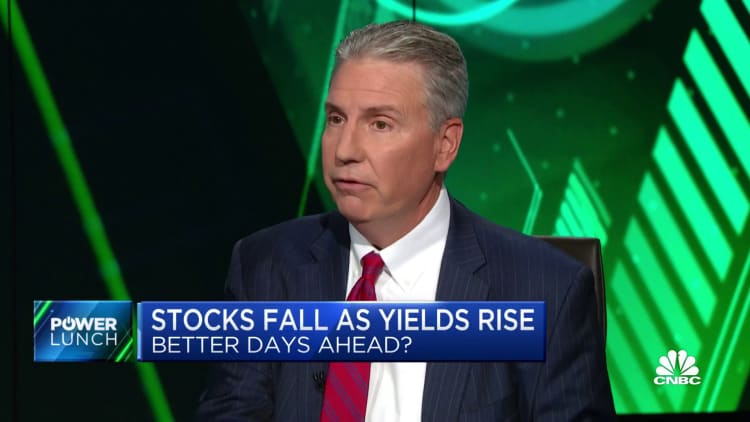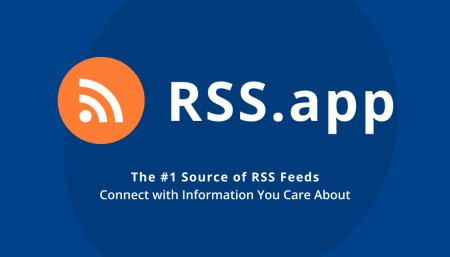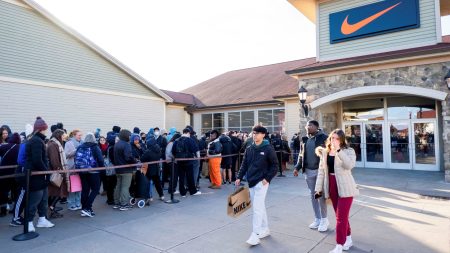Friday’s jobs report could provide a crucial piece to the increasingly complicated puzzle that is the U.S. economy and its long-anticipated slide into recession.
Wall Street prognosticators expect that nonfarm payrolls increased by 200,000 in July, a number that would be the smallest gain since December 2020, while unemployment is projected to hold steady at 3.6%. June saw a gain of 209,000, and the year-to-date total is around 1.7 million.
While slower job growth might fit the narrative that the U.S. is headed for a contraction, other data, such as GDP, productivity and consumer spending, lately have been surprisingly strong.
That could leave the payrolls number as a key arbiter for whether the economy is headed for a downturn, and if the Federal Reserve needs to keep raising interest rates to control inflation that is still running well above the central bank’s desired target.
“This will most likely be a report that has a little bit for everybody, whether your view is skirting recession altogether, a soft landing, or an outright recession by the end of the year,” said Jeffrey Roach, chief economist for LPL Financial. “The challenge is, not every metric is telling you the same story.”
Inside the numbers
For economists such as Roach, the clues to what the generally backwards-looking report tells about the future lie in some under-the-hood numbers: prime-age labor force participation, hours worked and average hourly earnings, and the sectors where job growth was highest.
The prime-age participation rate, for one, focuses on the 25-to-54 age group cohort. While the overall rate has been stuck at 62.6% for the past four months and is still below its pre-pandemic level, the prime-age group has been moving up steadily, if incrementally, and is currently at 83.5%, half a percentage point above where it was in February 2020 — just before Covid hit.
Rising participation means more people are coming into the labor force and easing the wage pressures that have been contributing to inflation. However, the lower participation rate also has been a factor in payroll gains that continue to defy expectations, particularly amid a series of Fed rate hikes specifically aimed at bringing back in line outsized demand over supply in the labor market.
“The durability of this labor market largely comes because we simply don’t have the people,” said Rachel Sederberg, senior economist for job analytics firm Lightcast. “We’ve got an aging population that we have to support with much smaller groups of people — the millennials, Gen X. They don’t even come close to the Baby Boomers who have left the labor market.”
Hours worked is a factor in productivity, which unexpectedly shot up 3.7% in the second quarter as the length of the average work week declined.
The jobs report also will provide a breakdown of what industries are adding the most. For much of the recovery, that has been leisure and hospitality, along with a variety of other sectors such as health care and professional and business services.
Wages also will be a big deal. Average hourly earnings are expected to increase 0.3% for the month and 4.2% from a year ago, which would be the lowest annual rise since June 2021.
Together, the data will be looked at to confirm that the economy is slowing enough so that the Fed can start to ease up on its monetary policy tightening due to a slowing labor market, but not because the economy is in trouble.
Balancing act
Payrolls will provide “a litmus test for markets amid a stretch of economic data that continues to show not just a resilient U.S. economy, but one that may be facing renewed risks of overheating,” said Tom Garretson, senior portfolio strategist at RBC Wealth Management.
RBC is expecting below-consensus payroll growth of 185,000 as “cooling labor demand [is] ultimately likely to reinforce growing economic soft-landing scenarios,” Garretson said.
However, Goldman Sachs is looking for a hot number.
The firm, which is perhaps the most optimistic on Wall Street regarding the economy, is expecting 250,000 due to expected strength in summer hiring.
“Job growth tends to remain strong in July when the labor market is tight — reflecting strong hiring of youth summer workers — and three of the alternative measures of employment growth we track indicate a strong pace of job growth,” Goldman economist Spencer Hill said in a client note.
Those measures include job data from alternative sources, the job openings count from the Labor Department, and the firm’s own employer surveys. Hill said labor demand has “fallen meaningfully” from its peak a year ago but is still “elevated” by historical norms.
Indeed, Homebase data shows that small businesses are still hiring but at a decreased pace. The firm’s Main Street Health Report indicates that employees working dropped 1.2% in July while hours worked fell 0.9%. Wage growth, though, rose 0.6%, indicating that the Fed still could feel the heat even if the top-line payrolls number is softer.
The trick, said Lightcast economist Sederberg, is for the labor market to be cooling but not crashing.
“We want to see a slow drawdown from the upheaval that we’ve seen in the past few months and years. We don’t want to see a crash and jump back to that 5% unemployment rate that we knew a decade ago or so,” she said. “So slow and steady wins the race here.”

Read the full article here









